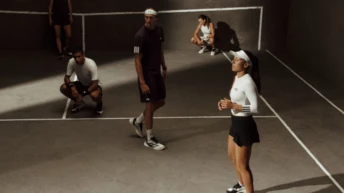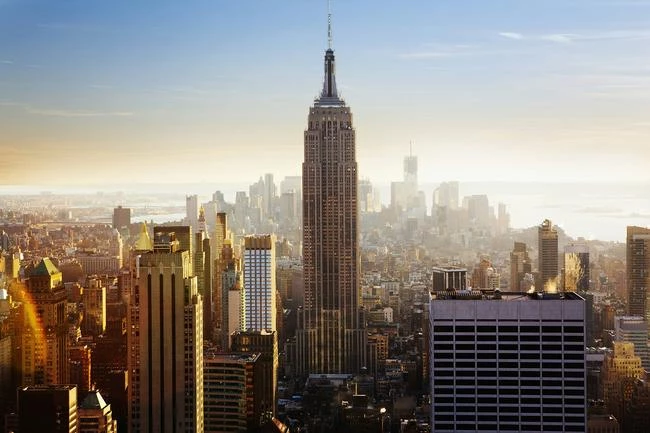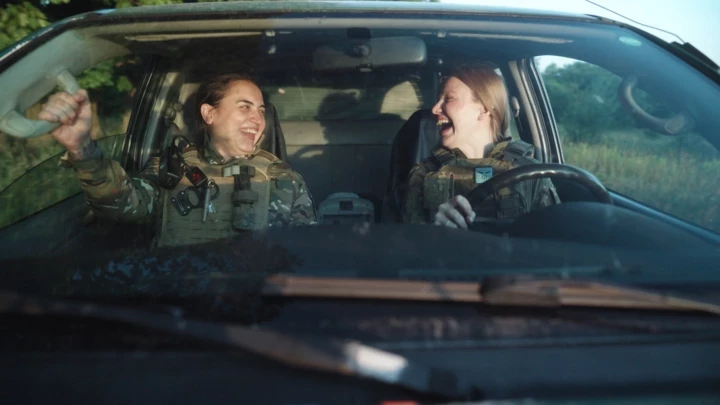
Save this storySave this storySave this storySave this storyYou’re reading Infinite Scroll, Kyle Chayka’s weekly column on how technology shapes culture.
The breakfast photo is the ur-text of the narcissistic internet, a bit of content that no one else is necessarily interested in but which the poster feels the need, or even the responsibility, to make public for anyone online to see. Posting a picture of what you ate on a given morning was something we did during the early years of Twitter and Instagram, and at the time it felt novel: suddenly, you could share the most mundane moments of your life with a crowd of waiting strangers who might just be excited to see them. In a way, the breakfast photo represented the utopian dream of social media: billions of average people could throw fragments of their lives onto the internet with little mediation—their meals, their pets, their shower thoughts—and it would turn into something not only engaging but vital, a dynamic record of reality from the ground level. To post, and to interact with others’ posts, was to participate in a grand project that valorized amateurism, banality, and a sort of content-based meritocracy: anyone and anything could be interesting, and even go viral, if only you posted it the right way.
Lately, though, I’ve found myself missing the breakfast photo and its equivalents online. There don’t seem to be as many people casually sharing random moments from their lives. In fact, doing so doesn’t make much sense anymore, and it’s a little hard to believe it ever did. What do we see on social media now, more than fifteen years since its advent? A sea of influencers and creators aspiring to varying degrees of high-budget polish; headlines announcing the latest horrors of international wars; images, videos, and text generated by artificial intelligence; and unmitigated trolling and attention farming catered to users’ deep-seated fears, and more or less sanctioned by the platforms themselves. The quotidian doesn’t have as much of a place in this landscape. Thus, many people simply aren’t posting as much as they used to. Recently, I watched as a bartender friend of mine in Washington, D.C., where I live, posted a few cheerful selfies to her Instagram Stories on a weekday morning. Later, I noticed they’d disappeared—she had deleted them. “Sometimes with everything going on in the world I get worried I look insensitive posting stuff like that,” she later explained. “I get self-conscious.”
There is a generational element to this sea change: millennials who grew up on social media are moving into middle age and perhaps seeking more privacy in their lives; once you’ve settled down with a partner and children, perhaps there’s less obvious incentive to project your personality online. “I think people are more suspicious of oversharing, generally, some of which is probably a useful and healthy correction from how much we were all sharing a decade ago,” Emma Hulse, a thirtysomething lawyer acquaintance of mine, told me. But, during conversations with dozens of people about their current posting habits, many Zoomers and users even younger told me that they felt an aversion to putting their lives on social media. They, too, are suffering from posting ennui. Kanika Mehra, a twenty-four-year-old, told me, “I feel like everyone in my generation is kind of a voyeur now,” still scrolling but not posting. She continued, “People don’t want to be perceived,” and if they do post they “feel a bit of a vulnerability hangover.” Tarik Bećarević, a seventeen-year-old, said that he and his friends had never experienced the era of casual social media; now they’re stuck comparing notes on how to order their Instagram carrousels. “I honestly can’t even imagine taking a photo of my breakfast and posting that. Maybe as slide six of a photo dump,” Bećarević said. (His formula for an ideal photo-dump assemblage: “One solo pic, one group photo with friends to prove you have a social life, and then something like pretty nature or food or, preferably, a photo of some unique hobby.”) Even his friends’ private accounts, he continued, “are curated to seem free, rather than actually being free.”
As social media has evolved, the baseline expectations for posting have risen again and again. Dashed-off tweets were supplanted by carefully composed Instagram photos, which were replaced, in turn, by TikTok clips, which increasingly aspire to the production value of television. Influencers and brand accounts can afford to adapt to the higher standards, investing in ring lights and phone mounts, while the rest of us wrestle with our iPhone camera apps. Man Bartlett, a musician and an online artist, was a pioneer of what he called “lifecasting” in the early twenty-tens. In one performance-art piece, from 2011, he spent twenty-four hours in the Port Authority Bus Terminal, tweeting in real time about the people he met and soliciting travel stories from his online audience. But the pressure of creating elaborate content and cultivating parasocial relationships became “toxic and sickening,” he told me. He continued, “As time went on and more and more content became video, that just wasn’t a medium I was personally going to invest my time and energy into.” These days, his main output is terse posts about his music projects on the upstart platform Bluesky.
As the social-media ecosystem has become more fragmented and complex during the past several years, with new platforms continually emerging and decaying, there’s been some user attrition. As one person put it, “I don’t have the patience to keep teaching myself Discord or Bluesky or whatever.” Many people complained about feeling that they were constantly fighting against technology. The design of social media has discouraged casual posting, with metrics that make users feel inadequate for not getting enough attention, and with algorithmic feeds that prioritize popular accounts that post constantly—not mundane moments but punditry, provocation, and self-promotion. “Nobody is seeing their friends’ posts in the feed, so it doesn’t even count as life updates anymore,” Benton Williams, a student at the University of Georgia, told me. Kele Fleming, an independent musician, summarized her frustration: “The algo is never in our favor.” Our feeds used to surface undiscovered pearls of content; now only prominent accounts are rewarded. If there’s no guarantee that our friends will even see what we post, then what is the incentive to keep doing it? When we do, we are ever conscious of the need to please the algorithm or else get lost in the void.
Posting always involves the risk of seeming cringe. Increasingly, it also involves the risk of being drowned out—or, worse, of standing out as inappropriate. During the Black Lives Matter protests of 2020, many individual users and corporate accounts were hesitant to post any content unrelated to activism. That feeling has returned now amid events such as Israel’s war in Gaza and President Trump’s mobilization of ICE against migrants. “The contrast between global crisis and personal update is so stark, it creates a kind of emotional whiplash,” Ali Moran, the founder of a communications agency, told me. Moran continued, “Silence has become its own kind of statement, but so has posting something unrelated. It feels like there’s no right move.” It can feel safer to retreat altogether, sharing personal thoughts or images in the confines of a private group chat or text thread. As a result, the wider internet is slightly more bereft of the mundanity that is the grist for its mill.
The phrase Google Zero is used to describe a hypothetical future internet in which search engines no longer drive traffic to other websites, because they can generate answers to queries themselves using A.I. We might also be heading toward something like Posting Zero, a point at which normal people—the unprofessionalized, uncommodified, unrefined masses—stop sharing things on social media as they tire of the noise, the friction, and the exposure. Posting Zero would mean the end of social media as it was once conceptualized, as a real-time record of the world created by anyone who was experiencing anything at all. But the presence of normies was what made social media worth tuning into. In their wake, like detritus on a once busy beach, there will be only dry corporate marketing, A.I.-generated slop, and dreck from thirsty hustlers attempting to monetize a dwindling audience of voyeurs.
For the time being, though, there are some posters who remain at it simply for love of the game. Michael Goldsmith, a publicity director at Doubleday (the publisher of my most recent book), is one of them. I’ve long admired his constant casual posting for an audience of fewer than two thousand followers on Twitter, now X. One recent illustrative Goldsmith musing: “if a dog could smoke would they hold the cigarette with two paws or in a single paw between two nails.” The post didn’t get a single like. I asked him why he perseveres. “It’s just served the cathartic purpose of taking something out of my brain and putting it into another container,” he told me, adding, “I don’t care if I post thirty times and get two likes or zero likes on those—there’s always the next post.” ♦
Sourse: newyorker.com







